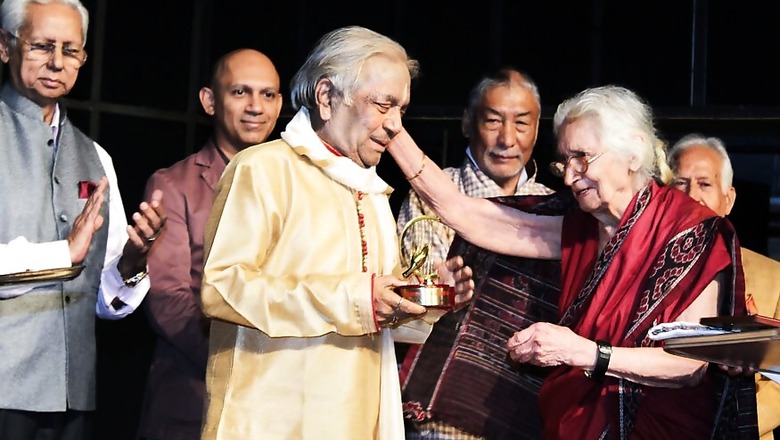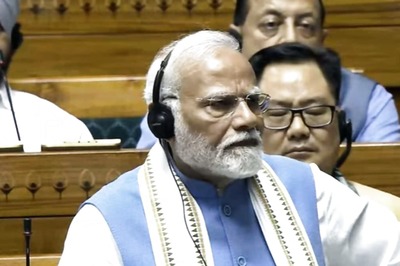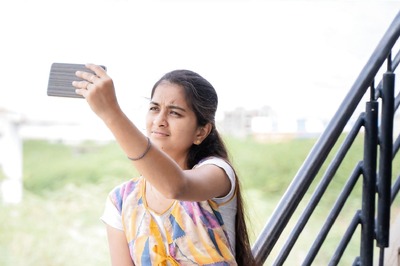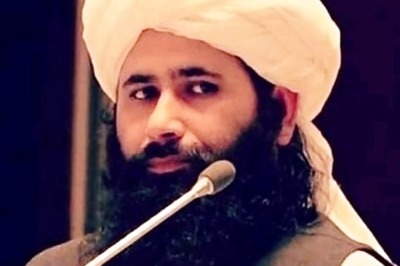
views
As a three-year-old, Brijmohan Mishra, famously known as Birju Maharaj, walked, fell and waddled towards the "taleemkhana" where young children learned classical dance, harmonium and the tabla.
Some eight decades later, the Kathak legend remembers where it all started. In a room in Lucknow where playing around musical instruments, watching rhythmic footwork and facial expressions moulded him into one of the biggest names in the dance form.
"It was like a sea of rhythm and beat, and for seven generations that was the only topic of discussion back home. 'Laya', 'swar', 'taal', 'bhangima', 'saundarya', 'nritya'... (rhythm, tone, beat, pose, beauty, and dance) that was all we talked about.
Everybody would start practising at 4 in the morning, I would also get there with some sweets in my pocket. Sometimes I would try my hand at a tabla or a harmonium... I started learning bit by bit from the very beginning, the dancer told PTI ahead of a performance in the capital on Friday.
Born in the house of Kathak exponent Jagannath Maharaj, better known as Acchan Maharaj, Birju Maharaj started performing from the age of seven.
The house on Gwynne Road, where he trained under the watchful eyes of Acchan Maharaj and his uncles Shambhu and Lachhu Maharaj, is now a Kathak museum. The "Kalka-Bindadin ki Dyodhi" is named after Birju Maharaj's grandfather and his brother, who are considered pioneers in establishing the Lucknow gharana.
"When Nawab Wajid Ali started awarding dancers handsomely, all the artistes thronged to Lucknow and so did my grandfather. Both of them shared a love for thumri and developed friendship for a lifetime," the dancer shared.
Looking back in history from his home in Delhi, he said his ancestral village, Handiya Tehsil near Allahabad, still has a "Kathakon ka Talab" (pond of Kathak dancers) and a "Sati ka Chauraha", where his grandmother burned on a pyre with his grandfather.
He inherited the legacy of Kathak -- from his grandfather to father and then to him. The 81-year-old Kathak veteran said he moved to Delhi after his father's demise and started teaching Kathak to support his family at the age of 13.
On Friday, he will perform with his disciples at the 4th edition of the Diksha Series, based on Guru-shishya parampara, at the Indira Gandhi National Centre for the Arts (IGNCA).
His disciples such as Pt Krishna Mohan Mishra, Deepak Maharaj, Vaswati Mishra, Malti Shyam, and Neelima Azeem will perform during the three-day event.
Looking back at his days of learning under his uncles after his father passed away, Birju Maharaj, who has been awarded India's second highest civilian award Padma Vibhushan, believes the way of teaching and learning Kathak has changed with unnecessary experiments and lack of patience -- in performers and the audience.
A lot of people changed the dance form according to their whim to please their audience. Like hitting hard on the floor with the flat of your foot, or turning at your feet. If you are not turning enough people will not clap. They have ruined the dance with these things, the seriousness and beauty of the dance is lost due to these antics, he rued.
Now it is about how fast you can please the audience, nobody has any patience. I remember starting a performance by holding a pose for 10 straight minutes and dancing for three hours. Who will sit for three hours now? he asked, recalling days when the dance was performed in temples and not stages.
Our audience used to be god-loving devotees and we would perform in temples reciting Katha' (tales) of Ram and Krishna... hence the word Kathak from Kathakar' (storyteller)... we would get paid from whatever was offered to the deity. We were happy with that.
While the younger generation is definitely interested in learning, the tendency to get sidetracked by flashier contemporary dance that is disastrous, he said.
When a jungle grows, poisonous weed grows too. They are doing circus in the name of dance in these reality shows. In the name of experiment they have lost the way and do whatever calling it Kathak, he said.
Has the interpretation of Kathak in Bollywood films influenced the dance form?
Dances in films such as Mughal-e-Azam and Pakeezah were choreographed by his uncle Lachhu Maharaj.
After his demise, films have only created confusion in form of fusion. I have remained clear on this subject that I will do my work, you show whatever you want to show... I continue to produce ballet in entirely Hindustani format, the dancer, who also excels at vocals and tabla, said.
Birju Maharaj has choreographed several songs in Bollywood. These include Kaahe Chhede Mohe for Devdas (2002) and Mohe Rang Do Laal in Bajirao Mastani (2015).
Apart from being a public performer, he indulges in painting but only for his own peace of mind. And perhaps some friends.
When everything is quiet, I paint. But I don't paint for an exhibition, it's only for myself. Or when some friends come over I show it to them and seek their approval, he said before breaking into a child-like giggle at his own humour.
Follow News18 Lifestyle for more




















Comments
0 comment